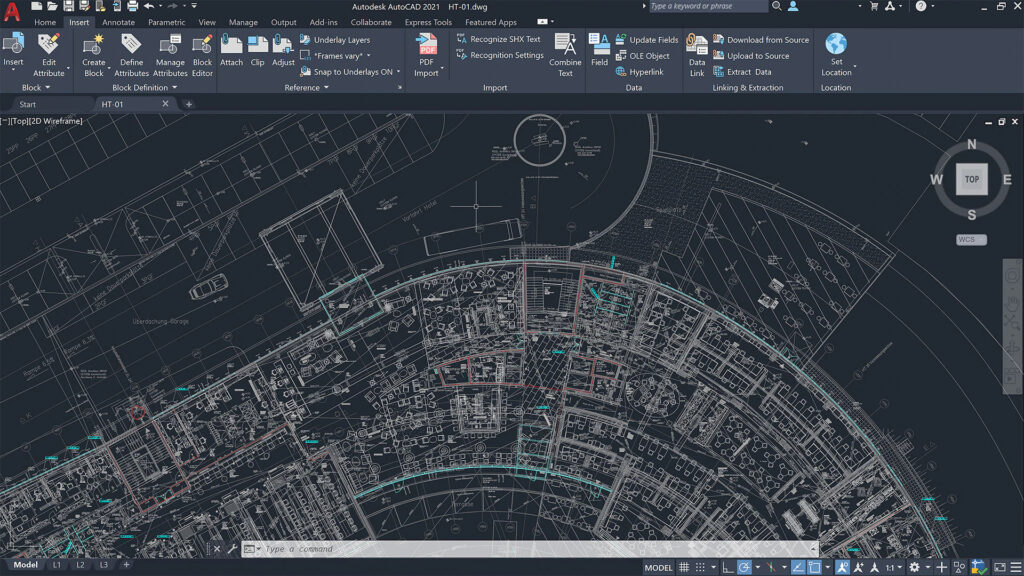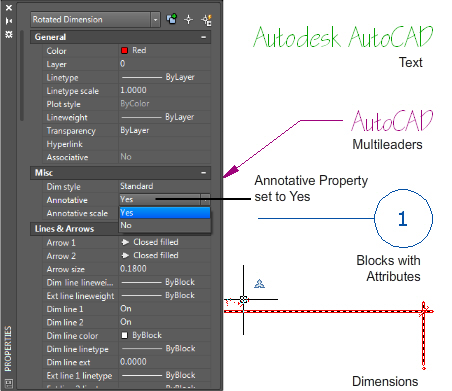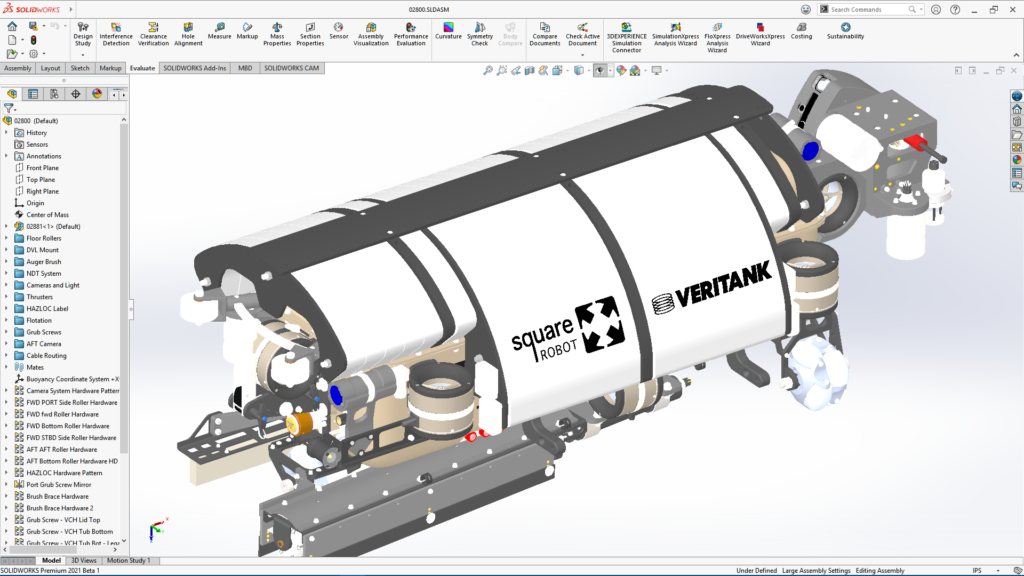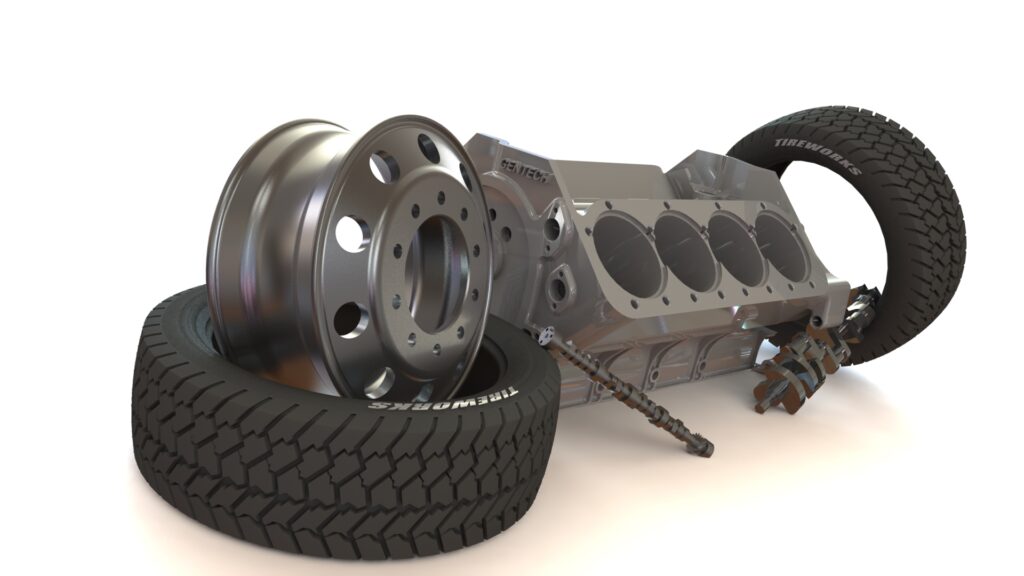AutoCAD vs SOLIDWORKS is a commonly heard comparison in the engineering and Computer Aided Design (CAD) worlds. This is because they are the two biggest names and brands in the CAD program space. Their names are the first two that come to nearly every engineer’s mind when CAD programs are mentioned. However, when this comparison is broken down and analyzed, it becomes apparent that it is not a fair or even comparison. Apples to oranges as the old saying goes.

Both of these powerful programs have the ability to create designs, enabling engineers to fulfill the expectations that comes with modern-day engineering. No more drafting, erasing, and drafting again with your pencil and ruler. Those days are gone, and the digital age of exact measurements and fancy 3D models are here. In this battle of AutoCAD vs SOLIDWORKS, have both established themselves as the industry leaders and have been developed to serve the exact needs of their users. They are also compatible with all of the modern and necessary machinery needed to create physical parts from said designs.
AutoCAD designers focus on the 2D drafting side, where SOLIDWORKS concentrates on 3D models. There is crossover as both programs can carry out both 2D and 3D designs, but it is clear which one they are optimized for. A more sensible comparison might be between Autodesk Inventor and SolidWorks.
Nevertheless, lets delve into both of these CAD programs and see what the two biggest names in computer aided design have to offer. Prepare for AutoCAD vs SOLIDWORKS!
AutoCAD
AutoCAD, standing for Automatic Computer Aided Design, is generally known as the very first drafting software that was widely adapted. The OG of the drafting game, if you will. The very first iteration of this CAD giant was released in 1982, and was the first CAD program that was designed to be used on Personal Computers (PCs) and not industrial minicomputers, which were… a little bigger than modern desktops. AutoCAD was instantly popular, and similar to SOLIDWORKS, it has been developed and evolved over the years to increase the possibilities and power that it possesses.
Some might not realize that AutoCAD does in fact offer 3D design features, but truthfully most (if not all) of AutoCAD’s users avail of its 2D drafting power.

Advantages
The initial aim of AutoCAD was to give its users a way to digitally create and edit 2D geometry, this is the main difference between AutoCAD vs SOLIDWORKS. This was on open ended vision that allowed AutoCAD to grow into what it is today. The flexibility provided is extended to the user and gives them endless options for their various projects.
As AutoCAD has grown, it has branched out into various industries with a number of different software programs. This has enable them to pull the best features from these industries and integrate them into AutoCAD through software updates. This has allowed AutoCAD to specifically target certain industries by offering bundles that include tools that are needed for specific drawings. For example, if you work in the electrical design field, you can choose the Electrical version of AutoCAD. This gives the electrical engineers tools that you will need without giving you more than you requires and slowing down the program.
It is a good idea to always have your work backed up to the cloud, and AutoCAD has you covered here as well. Accidents and computer meltdowns will not worry you anymore as they have integrated cloud storage in to their platform. This allows the users to access their design from anywhere, and never have to worry about losing them. The best part is, its free!
The drawing editing process is made so much easier because you can annotate drawings at will in AutoCAD. Adding notes to certain areas in your drawings has never been easier, and this make collaboration so much easier. Follow-up work can be directed through notes and annotation, and not through guesswork.

Disadvantages
Just because AutoCAD was the first one out there to meet the industry’s drafting needs and enjoyed success, it does not mean that absolutely everyone has adapted it blindly. There are those who are not fans of AutoCAD, and for those people there are plenty of alternatives out there. Lets dive in.
AutoCAD at first glance, to a complete novice can look intimidating and difficult. We would love to say that it really isn’t like that, but there is a steep-ish learning curve when starting off on AutoCAD. The sheer amount of tools and their respective buttons can make finding a simple feature quite difficult. On the plus side, there are a vast amount of guides and tutorial online that can help you along through the learning phase.
As mentioned above, AutoCAD does have the ability to create 3D models within its software. That being said, we would not recommend using AutoCAD for an 3D work that you have coming up. The 3D modeling is not parametric and it is not nearly as intuitive as what you get when you use a program like SOLIDWORKS. Also, the testing results you receive are not as accurate as those from other programs, however it does let you visualize the results from a 2D draft.
Tech support is good for AutoCAD, there are many different ways to contact them and they are always responsive. Live chat, support tickets, and talking on the phone are the most popular ways to contact them. There are also plenty of tutorial on their website that explore the common issues and problems that users experience on the software. However, there is not a well-known or official user group, where one can post questions and receive feedback and answers from fellow users. This is a drawback as groups like these are invaluable when user experience problems. Pro users are also put before regular users in the queue to receive support from AutoCAD.
Cost
There are ways to qualify for an educational license for AutoCAD, and if you do qualify you will be fortunate enough to receive a FREE three-year subscription. Unfortunately, for those of us that do not qualify, AutoCAD will run you $1,690 per year. You can also obtain a monthly subscription for $210 a month or a three-year subscription for $4,565. Pricey, but worth it!
SOLIDWORKS
Coming out in 1995, SOLIDWORKS nearly instantly became the industry standard when it came to 3D modelling. It was then acquired by Dassault Systèmes in 1997, who brought simulation features to the platform in 2001, for which it became known for.
As mentioned at the start of this article, SOLIDWORKS features a “building” approach to its design, The user creates 3D models by utilizing standard engineering features like slots, holes and bosses. These are combined to develop of final model that can be rendered and presented.
Similar to AutoCAD, SOLIDWORKS does have functionality in both 2D and 3D design. SOLIDWORKS uses 2D sketching at the beginning of the design process that it then bases the later 3D modelling on. However, it would be difficult to generate a full, competent design in 2D like can be done on AutoCAD.

Advantages
SOLIDWORKS has a large following of dedicated users, and that is due to the amount of useful features it provides, and the consistency that Dassault Systèmes have shown in developing and upgrading the platform. Professionals use SOLIDWORKS to create simulations and renders as close to real-life as possible.
If you are looking for a program to carry out machine simulation, look no further. SOLDIWORKS is by far the most popular program in the world for designing and simulating pretty much every product that you think of. Bedpans that are used in hospitals? SOLIDWORKS. Rockets that can bring humans into space and maybe further? SOLIDWORKS. You will always know exactly how your design will perform due to the intuitive technology that is encompassed in AutoCAD. Some of the features it includes in its simulations are:
- Time-based motion
- High-cycle fatigue simulations
- Mechanical resistance
- Topology
- Design optimization
- Buckling instabilities
- Natural frequencies
Among many more! Now technology has also brought in the use of touchscreen tablets to aid with the design process. Design on-the-go and freehand sketch your ideas!
SOLIDWORKS also includes CFD (Computational Fluid Dynamics), as liquids do not act in any way similar to solids when under forces. The software realizes this and has an entirely separate way to evaluate liquids when in a simulation. The life-cycle assessment also gives the user an idea of the life-span that they should expect from their design under the conditions they have set it up in. You should see what will go wrong or fail in your design first and how to remedy the situation before it happens in real life!
Photo-realistic rendering has become another feature that SOLIDWORKS has became known for. Its powerful rendering software gives the user an idea of how their design will look with the application of different materials in various environments. It is also convenient to collaborate with other users through the file-sharing 3DExperience module.

Having trouble with SOLIDWORKS? Well their website has pretty much every resource that you could think of at your disposal. Educate your self through product support, documents, news, best practices and take advantage of the SOLIDWORKS community to improve your knowledge.
Disadvantages
SOLIDWORKS is the world leader in 3D modelling, but that does not mean that it has driven all other CAD programs out of business. There are some weak points that it has, and that you should know about before you decide that it is the program for you.
The biggest issue we have found with SOLIDWORKS is the if you are a MAC user, you are out of luck. SOLIDWORKS is not compatible with the MacOS platform. This may not sound like a big deal to you if you are a Windows user, but when the time comes that you have to collaborate with a Mac user, there will be some complications.
Although 2D drawing is used to sketch the system that it then created into a 3D model, SOLIDWORKS does not have a competent 2D drafting system. If that is your desire, please refer back to our AutoCAD section.
Apart from the above items, there a very few negative things we would say about SOLIDWORKS. You will not be disappointed!
Cost
SOLIDWORKS does not come cheap, you weren’t expecting to get all the power for nothin now were you? To purchase the software you must purchase an initial license, and then a further annual subscription if you need access to tech support and updates. These together will run you $5,290.
Again, if you are a student you can obtain a reduced license for educational purposes, but there are no freebies this time as Dassault Systèmes does not give out free licenses to anyone!
So there you have it, not the comparison of AutoCAD vs SOLIDWORKS that you may have been expecting, but still a great resource if you are looking to find out more about both products.
Thank you very much for being here – we appreciate you taking the time to read our content. Which program do you prefer between AutoCAD vs SOLIDWORKS? And do you have any experience using either? Feel free to leave a comment down below – we would love to hear from you! And sign up to our newsletter for more of the same!
You can also follow us on LinkedIn, Facebook, Twitter, and Instagram so you can stay up to date. If you would like to learn more about mechanical engineering you can find more articles on our blog.



